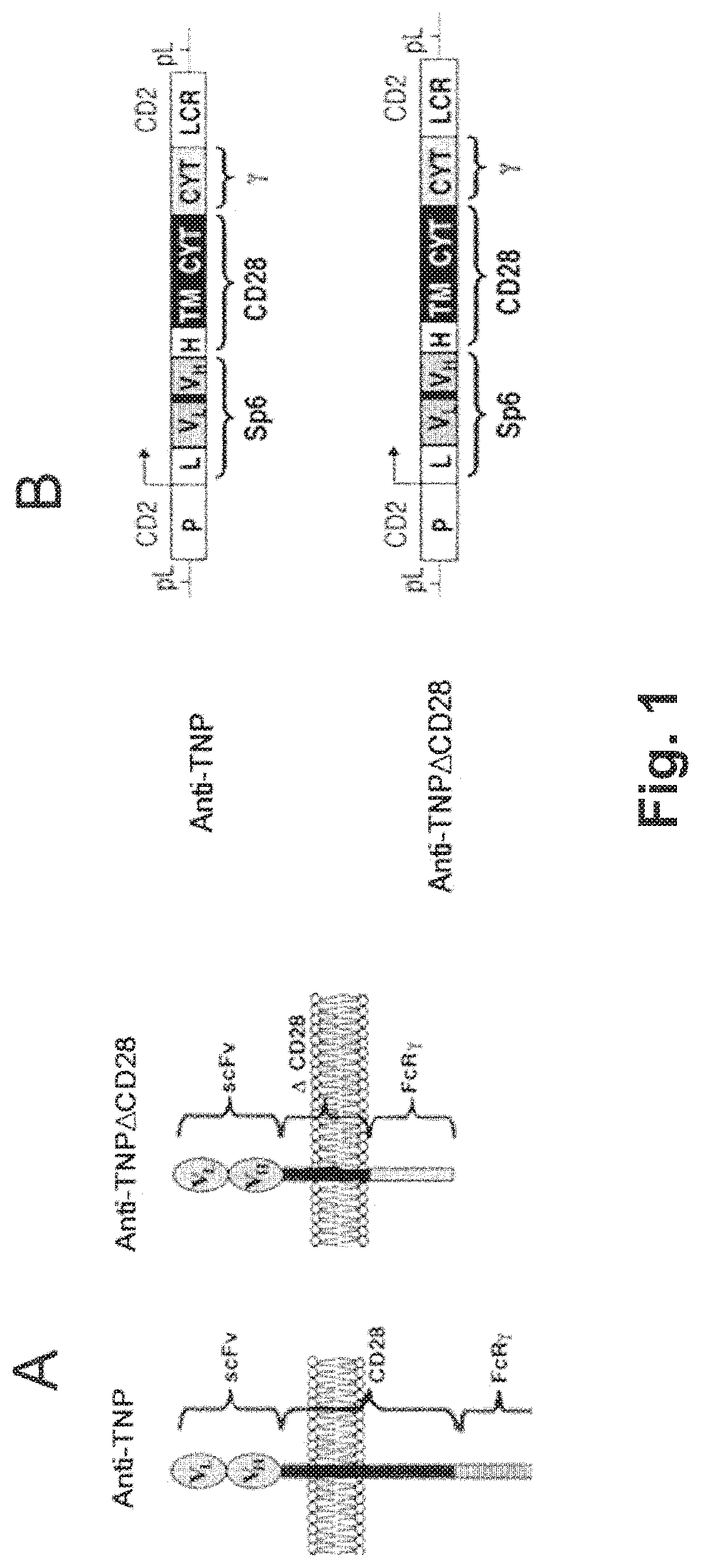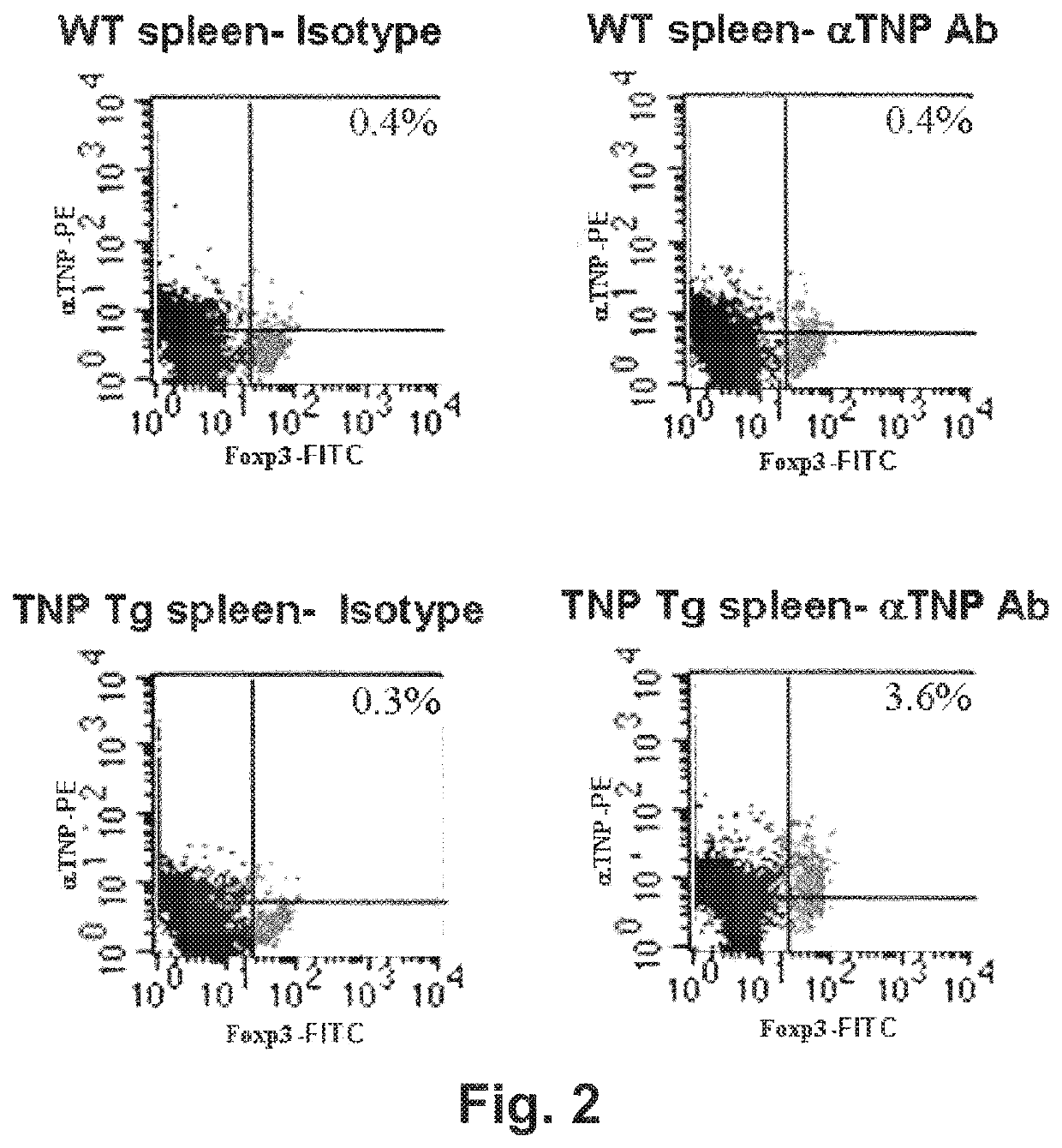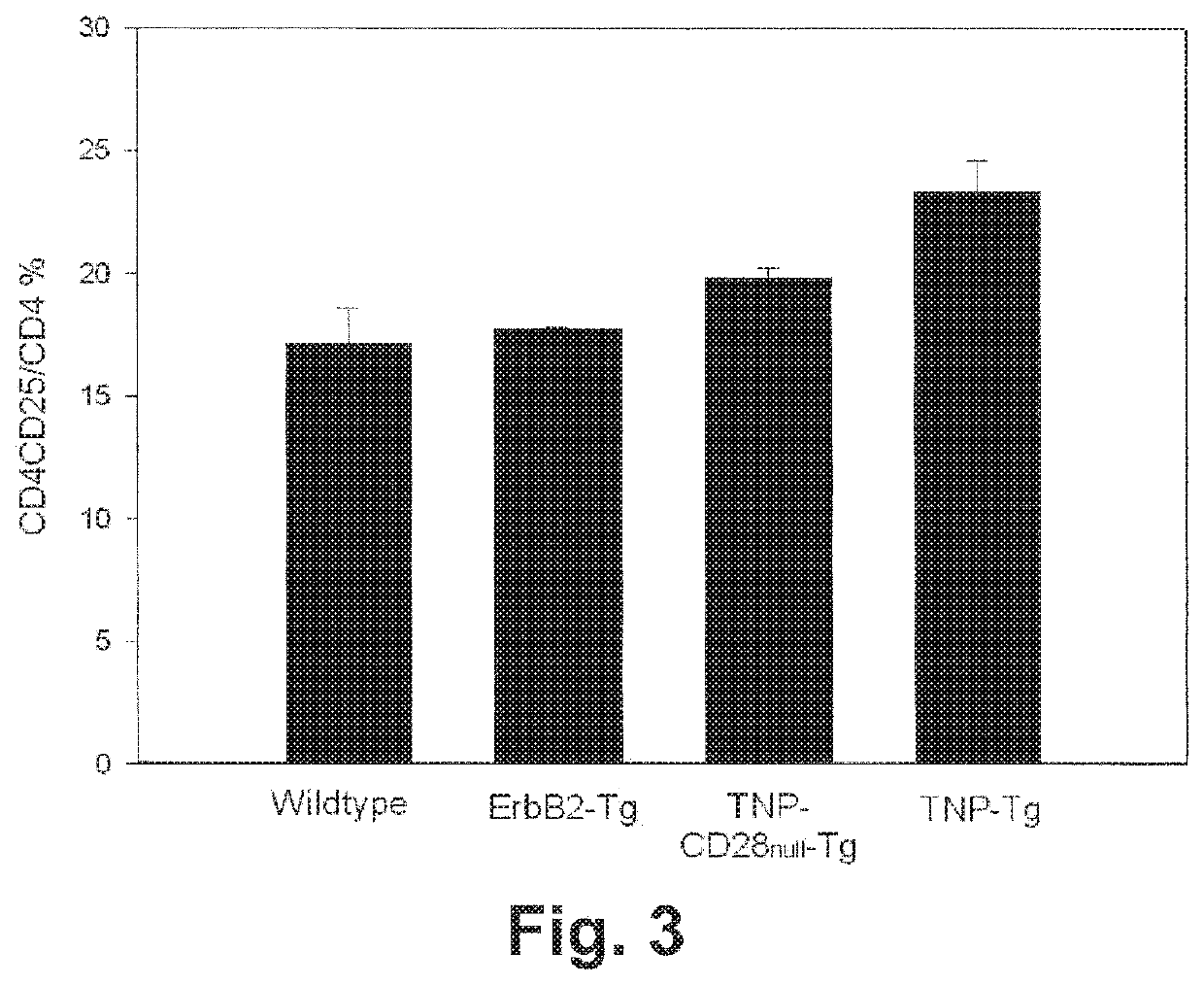Redirected, genetically-engineered T regulatory cells and their use in suppression of autoimmune and inflammatory disease
a technology of t-regulatory cells and t-regulatory cells, which is applied in the field of genetic modification of t-regulatory cells with chimeric receptors, can solve the problems of inability to successfully vaccinate tumor patients with a large variety of tumor-associated antigen vaccines, inability to suppress ibd, and increased risk of intestinal cancer in patients with ibd, etc., to suppress t-regulatory cells and suppress ox-r
- Summary
- Abstract
- Description
- Claims
- Application Information
AI Technical Summary
Benefits of technology
Problems solved by technology
Method used
Image
Examples
example i
Phenotypic Characterization of TNP-Specific Tregs
[0283]The inventors have produced transgenic (Tg) mice expressing a TNP-specific tripartite chimeric receptor (TpCR) that serve as a source of redirected Treg cells specific for the trinitrophenyl (TNP) hapten. This hapten has served as a “classical” antigen for years in studying both antibodies and T cell-mediated immunity. A chemically reactive form of this hapten, TNBS, is a contact sensitizing agent that induces and evokes delayed-type hypersensitivity (DTH) responses as well as inducing colitis in animals, as described herein.
[0284]Generation of TNP-specific Tregs was achieved by the creation of Tg mice that express TNP-specific TpCR that comprises an scFv from the TNP-specific mAb Sp6 mAb linked to a truncated CD28 molecule which was inserted between the scFv and the cytoplasmic part of the FcR γ chain (abbreviated as γ herein (see FIG. 1). This construct includes the hinge region, transmembrane region, and cytoplasmic region of...
example ii
Isolation of Tregs in which TNP-Specific TpCR are Highly Expressed
[0288]Tregs were isolated using double magnetic bead separation (Miltenyi Biotech) or by fluorescent cell sorting in which fluorescently labeled CD4+CD25+ cells were sorted using the FACSARIA cell sorting system.
[0289]Treg expression of TNP-specific TpCR was assessed by containing cells for Foxp3 (considered the “gold standard” marker of Tregs) and PE-labeled mAb specific for TNP antibody (generated in the inventors' laboratory). Controls included groups stained with the appropriate isotype controls. As is shown in FIG. 2, Tregs from TNP-Tg mice, but not from wild-type mice, expressed high levels of TNP-specific TpCR.
example iii
TNP-Tg Mice Posses Increased Numbers of Foxp3+ Treg Population
[0290]Peripheral lymphocytes from the spleen as well as gut-associated lymphocytes from the lamina propria of the colon were stained. As shown in FIG. 3, a CD4+CD25+ cell population (represented as the ratio of CD4+CD25+ cells among CD4+ T-cells) was elevated modestly in TNP-Tg mice in comparison to control mice (wildtype, ErbB2-Tg and TNP-CD28 null-Tg mice). In contrast, higher numbers of Foxp3+ cells were observed in TNP-Tg animals compared to the control animals in comparison to all other mouse types (FIG. 4).
[0291]To resolve what may have appeared to be an inconsistency between the highly elevated Foxp3+ Treg population in TNP-Tg mice and the modestly elevated CD4+CD25+ Treg population in these mice, effector CD4+CD25− cells were isolated by cell sorting to a level of 99% purity. Isolated cells were stained for Foxp3 (FIG. 5). As expected, no positive Foxp3 staining was noted in T effector cells from wildtype, ErbB2-T...
PUM
 Login to View More
Login to View More Abstract
Description
Claims
Application Information
 Login to View More
Login to View More - R&D
- Intellectual Property
- Life Sciences
- Materials
- Tech Scout
- Unparalleled Data Quality
- Higher Quality Content
- 60% Fewer Hallucinations
Browse by: Latest US Patents, China's latest patents, Technical Efficacy Thesaurus, Application Domain, Technology Topic, Popular Technical Reports.
© 2025 PatSnap. All rights reserved.Legal|Privacy policy|Modern Slavery Act Transparency Statement|Sitemap|About US| Contact US: help@patsnap.com



